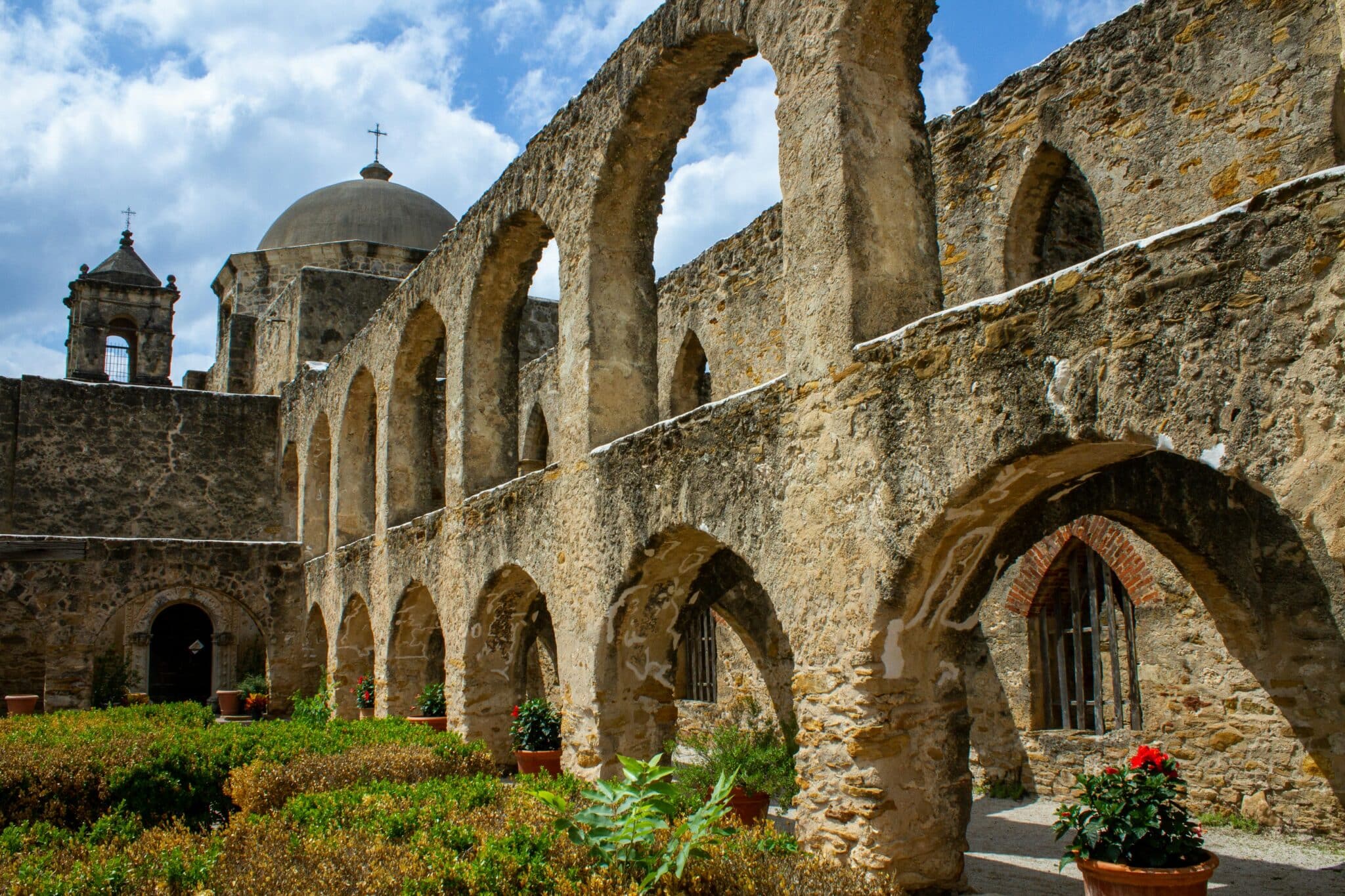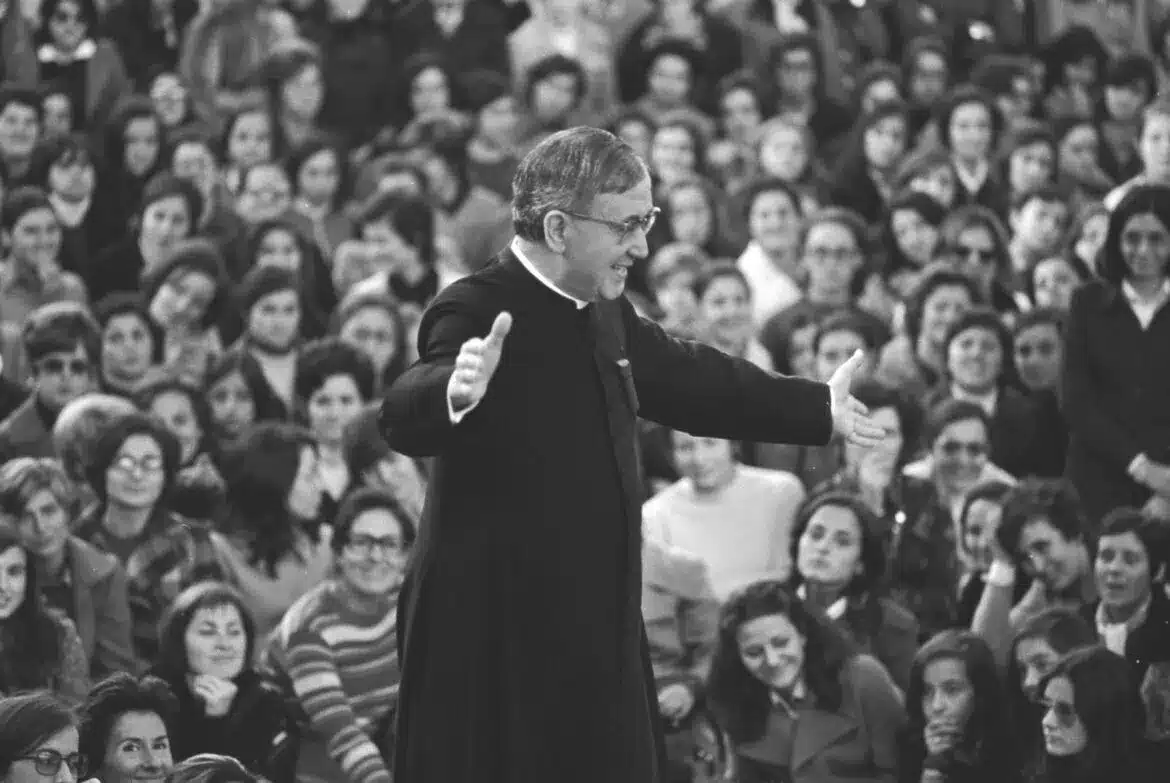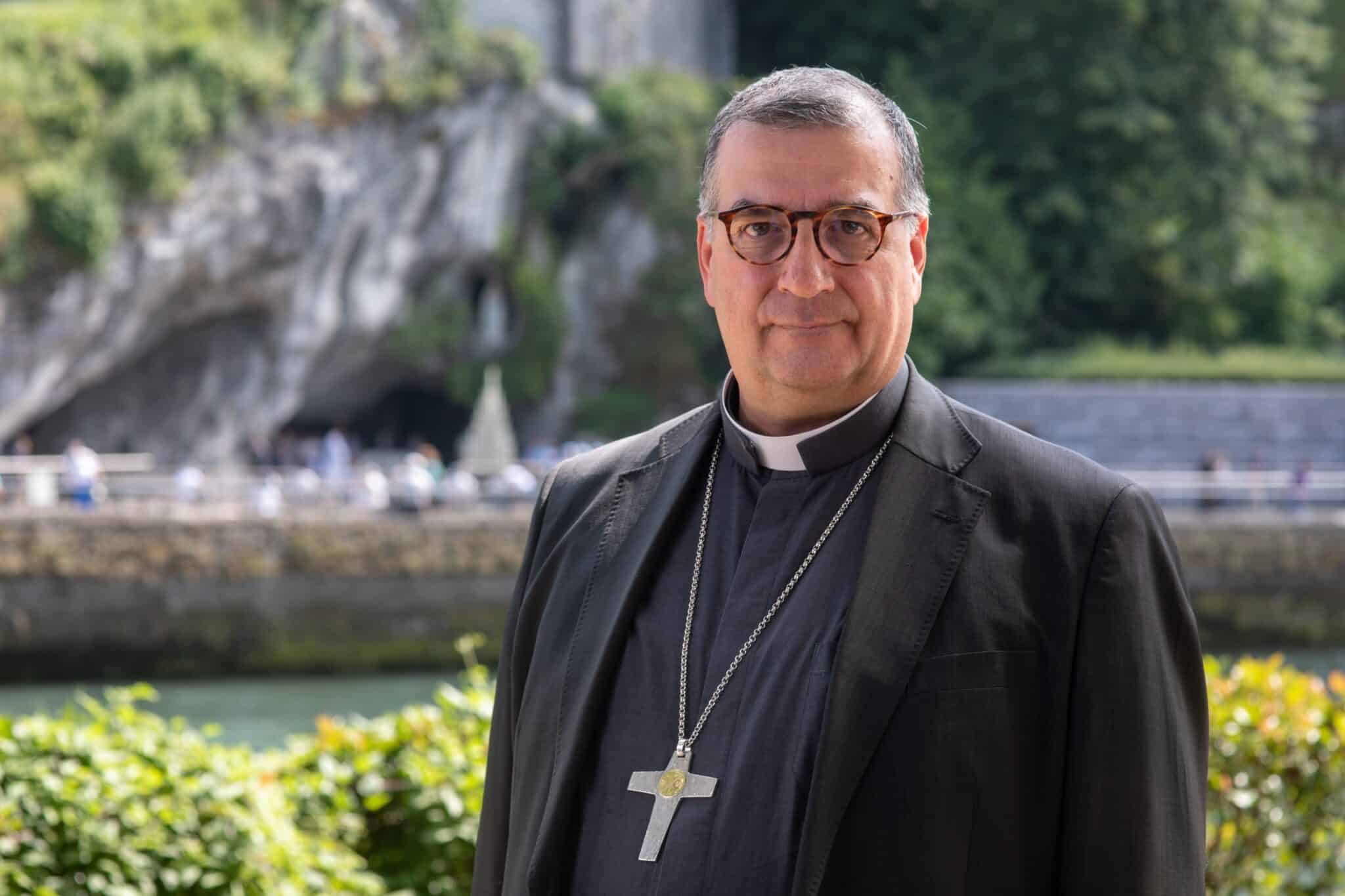You do not have to walk very far along the famous Riverwalk that winds through the heart of San Antonio before you run into a lovely, life-size statue of Anthony of Padua. Nestled amidst tall green plants and holding the Child Jesus, the statue is located prominently along the public walk bordering the San Antonio River.
This is not the only image of the saint you will see in this city.
How the City Got Its Name
How did it happen that the city of San Antonio was named after Saint Anthony? Over 300 years ago, in 1691, a small expedition of Spanish explorers traveling north from Mexico advanced some 150 miles into present-day Texas. On June 13, they stopped to set up camp near a Coahuiltecan (kwa-weel-teken) Indian village along the river. The Franciscan chaplain of the small expedition, Father Damien Massanet, suggested that they call the place San Antonio because they had arrived on the feast of Saint Anthony.
The Spanish general, Domingo de Teran, agreed with the brown-robed friar and then took the idea one step further: He named the river San Antonio, too!
Some 27 years passed, however, before another Franciscan friar, Father Antonio Olivares, founded the first Franciscan mission near the village in 1718. Its purpose was to evangelize the Coahuiltecans. The friar named the mission San Antonio de Valero in honor of Saint Anthony and the duke of Valero, a Spanish viceroy.
Mission San Antonio, which gave the city its name, is the most visited landmark in downtown San Antonio today. However, the famous adobe structure is better known as the Alamo—though historical plaques carefully explain that the building was originally named Mission San Antonio.
In brief, the name change came about this way: From 1718 till 1793, Spanish missionaries labored patiently at Mission San Antonio to evangelize the Coahuiltecan people and create a Christian community there. Their efforts met with a measure of success but, because of various difficulties, missionary activities came to an end at Mission San Antonio in 1793.
The abandoned mission was then converted into a military fort that came to be known as the Alamo. The fortress is best remembered for the historic siege of 1836 (February 23 to March 6). During this battle, popularized in films, 188 fighters for Texas independence were killed at the fort by Mexican forces led by General Santa Ana. Davy Crockett, Jim Bowie and other famous Americans died in the battle that gave birth to the war slogan “Remember the Alamo!”
Other Franciscan Missions Nearby
Along with Mission San Antonio, four additional Franciscan missions were established. These missions, too, were located along the banks of the San Antonio River, just south of what is now downtown San Antonio.
The most notable of these was Mission San José, founded in 1720 by the Spanish Franciscan missionary, Father Antonio Margil (1657-1726), whose cause is up for beatification. Considered the model of the Texan missions, San José was the largest in the area and became known as the “Queen of the Missions.”
The three other missions, originally founded in East Texas but transferred to the San Antonio area in 1731, are: Concepción, San Juan Capistrano and San Francisco de la Espada.
These missions, like Mission San Antonio itself, experienced their own share of successes and setbacks. On the plus side, the missions brought the gift of Christian faith to the native people living near San Antonio. At San José, for example, over 2,000 Native Americans were baptized during that mission’s 104 years of active life.
The missions also provided the Coahuiltecans—mainly hunters and food gatherers—opportunities to learn new skills like farming, ranching and construction. In addition, the thick walls of these buildings offered protection from their enemies—the raiding Apaches and Comanches from the north.
But the missions had their downside, too. Many of the indigenous people died from European diseases introduced by the Spanish missionaries and soldiers. And the regimentation that the Native Americans experienced at the missions often clashed with their freer, more natural lifestyles. Loss of culture is another negative consequence pointed out by scholars.
By 1824 the San Antonio missions were secularized and the era of the old missions came to an end. A period of neglect eventually followed and, little by little, the mission buildings began falling into ruin.
The Restored Missions Today
Since the 1920s, however, impressive efforts have been made to restore and preserve the old San Antonio missions. The City of San Antonio is convinced that the Old Spanish missions provide a real connection to the past and are a constant reminder of the important contributions that the Native American and Hispanic communities have made to that history.
The four restored missions, as well as old Mission San Antonio—the Alamo—are popular tourist sites today. Beginning at the Alamo, visitors can drive, bicycle or walk the 10-mile Mission Trail that extends to Mission San Francisco de la Espada, the southernmost mission.
The mission churches, moreover, except for Mission San Antonio, are active parishes belonging to the Roman Catholic Archdiocese of San Antonio. The spacious mission grounds are managed by the National Park Service.
Even the Franciscans have returned, by way of American Franciscan friars from the Sacred Heart Province, based in St. Louis, Missouri. These friars began serving at Mission San José in 1929 and continue to this day. Since 1967, they also serve as pastors at San Francisco de la Espada.
According to Father Herb Jones, O.F.M., current pastor of Mission San José, the composition of the crowds attending Sunday Mass at San José is quite multicultural, including parishioners of Hispanic, Anglo, African-American and Asian descent, not to mention tourists from various states. The Mission’s “Mariachi Mass,” celebrated at noon each Sunday, has been a 35-year tradition. It is particularly popular with tourists, many of whom consider it the “highlight of their visit to San Antonio,” observes Father Herb.
The congregation at the small Espada Mission, located a few miles farther south of Mission San José, is predominantly Hispanic. The quaint little chapel comfortably seats about 88 people. Two Masses are celebrated at la Espada each weekend, one Saturday evening and the other Sunday morning. The pastor of la Espada, Father Larry Brummer, O.F.M., informed St. Anthony Messenger that, three or four times a year, a small group of Native Americans comes to San Francisco de la Espada to perform ceremonial dances on the plaza in front of the mission.
Diocesan priests from the Archdiocese of San Antonio serve at Mission Concepción and Mission San Juan Capistrano.
The Legacy of Saint Anthony
The story that began 313 years ago this month on the feast of Saint Anthony near the Coahuiltecan village that became San Antonio, Texas, is a story of sadness in many respects—at least in the sense that the Coahuiltecan people, who dwelt in this region before the Christians arrived from Europe, have generally disappeared as a distinct community.
Yet Father Herb informs St. Anthony Messenger that 12 or so descendants of the Coahuiltecans are active members of Mission San José Parish. And according to Msgr. Balthasar Janacek, the archdiocesan director of the Old Spanish Missions, there is an organization known as “The American Indians of Texas at the Spanish Colonial Missions,” who identify themselves as “descendants of the Coahuiltecans.” This group sometimes performs dances at the missions.
“Those of us living in this area,” Msgr. Janacek adds, “often see descendants of the Coahuiltecans in the Native American faces we pass each day on the streets of San Antonio.”
The labors and frustrations of the missionaries, the native peoples and the Hispanic communities of the past have not been in vain. We know this, moreover, from seeing the harvest of their good work clearly manifested in the extensive faith community that is San Antonio today. We can look, for example, at the good works of the many charitable institutions of the Archdiocese of San Antonio: hospitals and medical center, homes for children and for the aging.
We can point to other admired institutions, like San Antonio’s Mexican American Cultural Center (MACC), a well-known Catholic center for multicultural pastoral training and language studies. It seeks to meet the religious and social needs of Hispanic communities and promotes understanding among all cultures. We can also note at least five prominent Catholic colleges and universities in the archdiocese, as well as the large number of religious communities of men and women, including at least eight communities of Franciscan sisters.
Each year on October 3, the eve of the feast of Saint Francis of Assisi, members of these Franciscan communities, as well as Secular Franciscans living in the area and the Franciscan friars who serve at the old missions, come together at Mission San José to commemorate solemnly the death or passing (transitus) of Saint Francis. The spirit of Saint Francis lives on today.
And so does the spirit of Saint Anthony, the city’s patron saint, who died in 1231, less than five years after the death of Saint Francis. Anthony is perhaps the most popular follower of the great peacemaker of Assisi. Anthony was a great preacher of peace and reconciliation.
Anthony is a perfect patron for the city of San Antonio and of the wonderful river that runs graciously through it. May the spirit of Saint Anthony—which is a spirit of peace, reconciliation and healing—continue to bless and guide the great city that bears his name!
San Fernando Cathedral
At the invitation of King Philip V of Spain, 15 Spanish families came as colonists to San Antonio from the Canary Islands in 1731. They soon built San Fernando, the first parish church in San Antonio, indeed, in the state of Texas. The church, which has served as San Antonio’s cathedral since 1874, sits a half mile or so from the Alamo, on the opposite side of the San Antonio River. From the beginning, this church has been at the center of the life of San Antonio.
Today, the newly renovated cathedral continues to draw thousands of visitors each month. Many unique events and celebrations take place at San Fernando, such as the blessing of the new mayor and the city council. Every Good Friday, over 15,000 people gather to participate in the reenactment of the passion of Jesus.
When Mission San Antonio stopped functioning as a mission in 1793, its archives were moved to San Fernando, the city’s parish church. There is a marble sarcophagus in San Fernando, believed to hold the remains of the defenders of the Alamo.
A marker in the cathedral commemorates the visit of Pope John Paul II on September 13, 1987, the first and only visit of a pope to Texas. San Fernando’s Sunday Mass is televised in San Antonio and even nationally by certain outlets.








